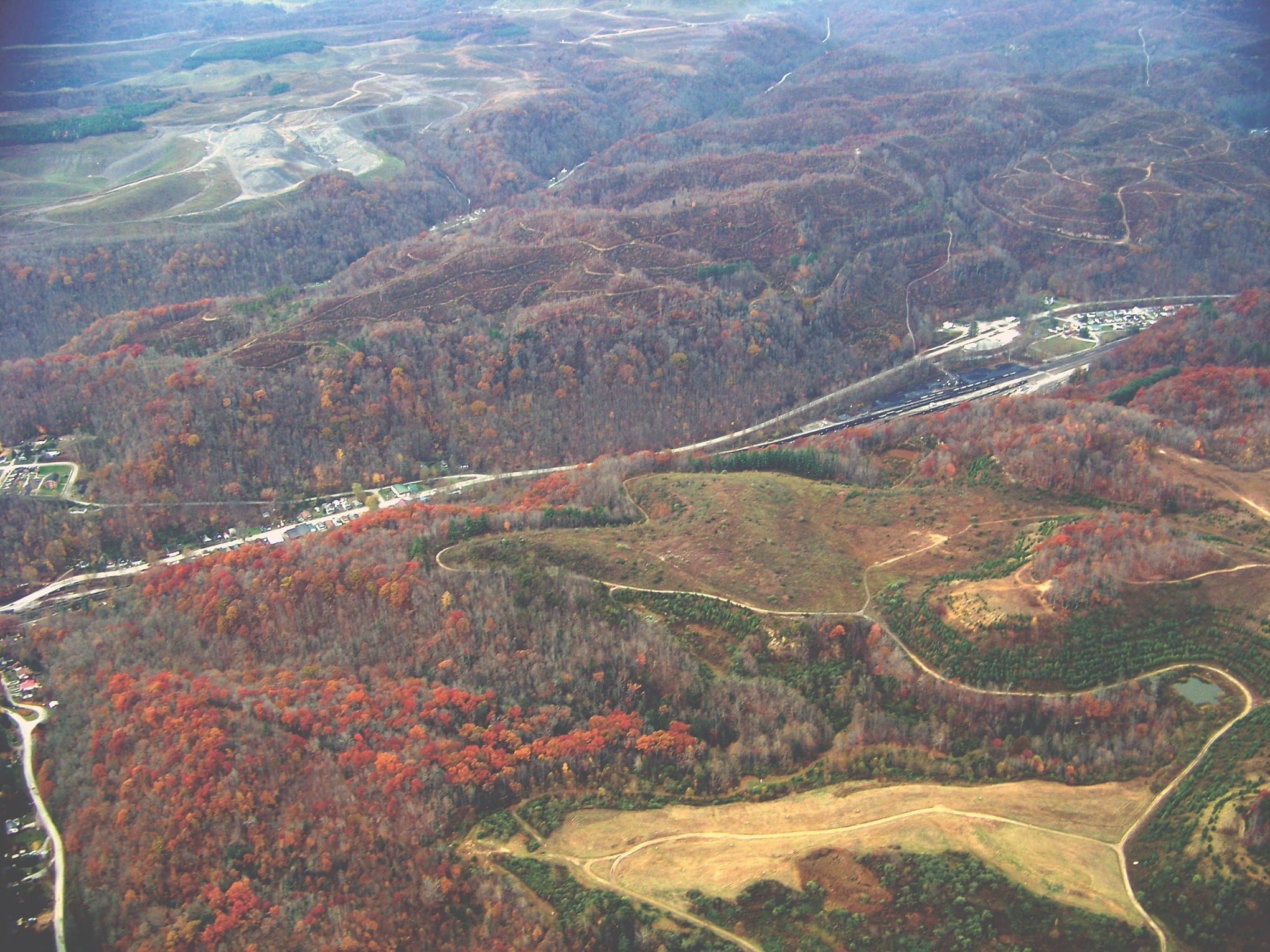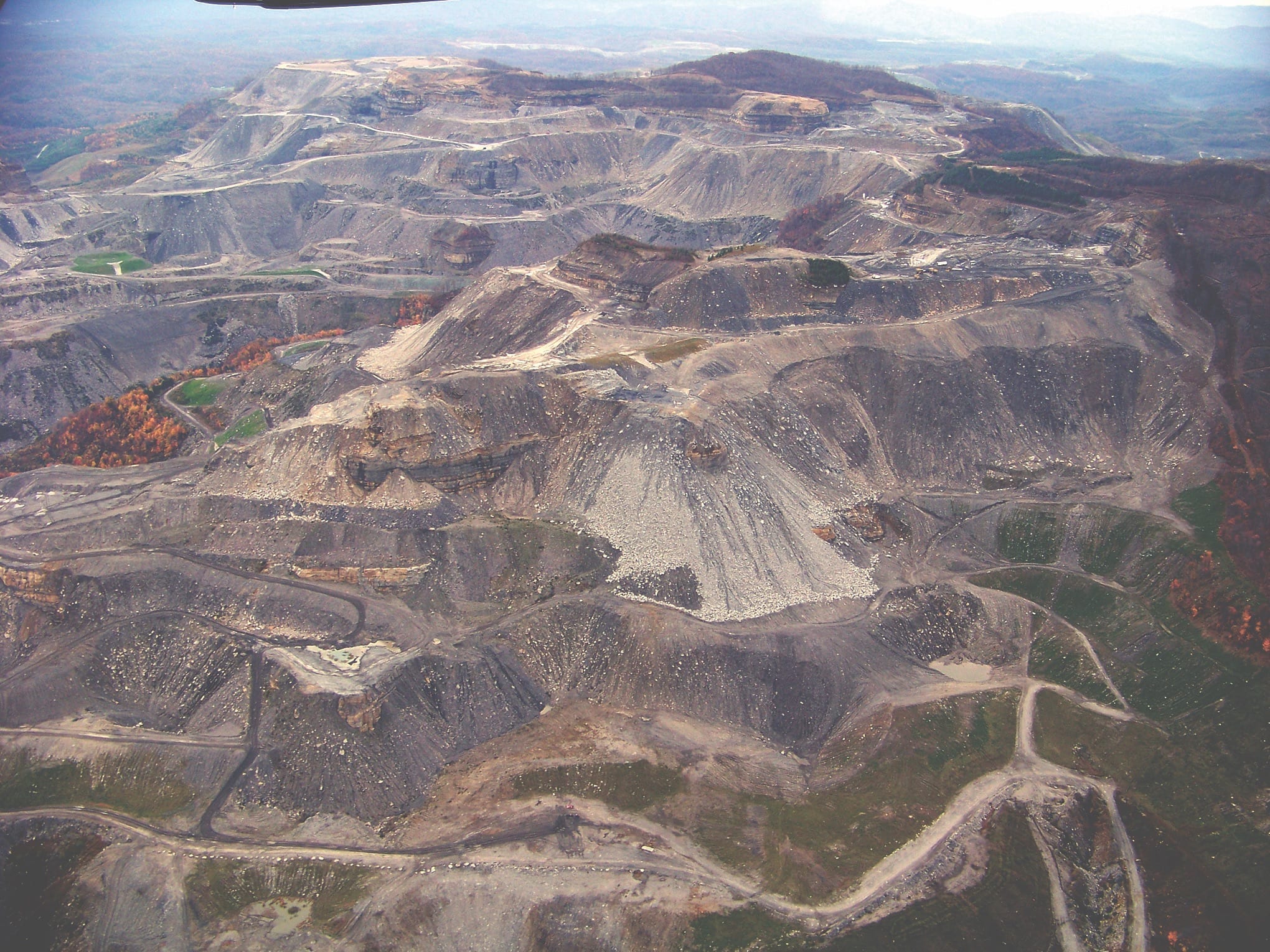Mountaintop removal is the cheapest way to mine coal. Over 1.5 million acres have already been destroyed in the Appalachian mountain chain of the eastern United States. The impact on the environment, animals, and humans is simply catastrophic and completely unnecessary – only 7% of U.S. electricity comes from mountain top removal coal.
Deep in the Appalachian Mountains, in the center of north America’s coal country, a war is raging. Despite numerous mentions in international media outlets like the New York Times and The Guardian, many world and even U.S. citizens are unaware of this battle and their connection to it through energy consumption. Like many conflicts these days, this one is focused on an energy source — in this case coal — and involves international corporations, dirty politics, and the outright exploitation and abuse of an entire people.
The southern Appalachian Mountains have some of the most biodiverse forests in the world.
At the heart of the battle is mountaintop removal, an extreme form of strip mining that involves removing an entire top of a mountain in order to extract a seam of coal that is often less than a meter thick. Instead of harvesting the timber or preserving the topsoil for future use, the coal industry labels it “overburden,” pushing it over the mountain into a hollow below, often burying creeks and streams in the process. These are called “valley fills,” and the consequences are devastating: over 2,000 miles of waterways have been buried or polluted and over 800 square miles of mountains destroyed. Each year, the equivalent of 56 Hiroshima-sized atomic bombs is detonated by the coal industry in the region. Two recent studies have shown that people living near strip mining sites are 50% more likely to die of cancer and 42% more likely to have a child with birth defects.

“We’ve destroyed a million and a half acres in the past thirty years with mountaintop removal,” said Jack Spadaro, a former mine inspector and environmental activist. “It’s going on at an accelerated rate now… this [is happening in] the forest that was still in existence after the last Ice Age, and it was the seeds from this forest that repopulated the rest of north America.”
I think any reasonable person can intuitively understand that when you’ve blown the top off a mountain you have forever destroyed it.
Bev May
With statistics like these, a natural ques- tion is why such devastation was allowed in the first place. The irony is that mountaintop removal developed from a loophole in legislation intended to curb the harshest side effects of strip mining. Signed by President Jimmy Carter in 1977, the Surface Mining Control and Reclamation Act required coal companies to demonstrate that surface mining would create a postmine site that could be used for residential, commercial, or industrial development, and that they would restore the mined land to the “approximate original contour” of the original mountain.
The latter provision has been ignored outright by the coal industry. In keeping with the logic of mountaintop removal, the supposed reclamation is carried out in the cheapest way possible, with harsh, non-native grasses being sown to replace the wasted topsoil and scrub pines as poor substitutes for the hickories, pop- lars, and oaks that once populated the site. Attempts to convert the plateaus into residential and commercial prop- erties have been met with wide-scale failure. Countless industrial parks built on these sites and scattered throughout eastern Kentucky remain either empty or half-filled. At least one such piece of land now boasts a golf course, a means of recreation that hardly benefits the area as it is usually enjoyed by the more affluent. And although a prison was built on another site, surveyors quickly realized that it was sinking, apparently resting on unstable ground due to the mining. It has been given the moniker “Sink-Sink,” a pun on the infamous prison called Sing-Sing, located in new York State.

As for U.S. politicians there is often a great divide between those who represent coalproducing states and others who do not. Following eight years of lax oversight by the Republican administration of President George W. Bush, current President Barack Obama has stiffened environmental and safety regulations of the coal industry. In response, Big Coal and their friends in government have claimed that Obama has effectively declared war on coal.
At the state level, Appalachian politi- cians of both parties have proven to be beholden to the coal industry, which too often donates exorbitant sums to their political campaigns. In a now-infamous speech given in 2011, Kentucky Governor Steve Beshear bellowed that the Environmental Protection Agency should “get off our backs” in reference to the increased restrictions, ignoring the pleas of constituents like Beverly May whose land had been threatened by mountaintop removal mining. A nurse practitioner from the coal- fields of eastern Kentucky, May took the lead in organizing her neighbors against the impending mine, which would have seen massive coal trucks roar up and down the one-lane road in her community.
Mountaintop removal needs everybody against it. Change is not going to come from this region, even. It’s going to come from national and international pressure to stop mining coal this way.
Denise Giardina
“I think any reasonable person can intuitively understand that when you’ve blown a top off a mountain you have forever destroyed it”, May said. “There’s only one thing that [the coal industry is] there for and that is to harvest coal. It doesn’t mat- ter what’s in their way. It doesn’t matter if a cemetery’s in their way; it doesn’t matter if the homeplace is in their way; it doesn’t matter if a hugely valuable forest is in their way. That’s garbage […] you can toss it over the hill. All that matters is […] getting the coal out in as cheap a manner as it can possibly be obtained – and that’s mountaintop removal.”
For their part, the coal industry claims that this method of mining is actually a godsend for Appalachia, a region that contains some of the highest poverty rates in the United States. Coal mining and mountaintop removal in particular provide jobs for the region, they argue, affording financially solid lives for many Appalachian families. But they ignore another set of statistics, which details the thousands of jobs lost due to the mechanization on which mountaintop removal is reliant. In West Virginia alone, this mechanization has resulted in a net loss of over 48,000 jobs from 1978 to 2003, reported USA Today. Yet another irony is that many of the eastern Kentucky counties with the largest levels of coal production also boast the highest rates of poverty.
That’s not coal mining in any sense of the word. That’s just total rape of the earth.
Larry Bush
Many residents of Appalachia have bought into the coal industry’s propaganda. It’s a common sight in the region to see cars plastered with bumper stickers bearing the slogans “Friends of Coal”, “Coal Keeps the Lights On”, and worse: “Hug a Miner, Shoot a Tree Hugger.” Thousands attend pro-coal rallies and demonstrations, decrying environmentalists and President Barack Obama, who has become the primary target of their ire due to increased enforcement of surface mining restrictions by his administration’s Environmental Protection Agency.
Despite this heated climate, countless other Appalachians are rising up in protest of mountaintop removal. Each February in Frankfort, Kentucky, 1.400 concerned citizens descend on the state Capitol for “I Love Mountains Day”, a rally designed to draw attention to the issue. In September 2010, 114 people were arrested in front of the White House as part of “Appalachia Rising,” a mass mobilization of thousands petitioning the Environmental Protection Agency and the Obama administration to enact more stringent regulations and enforce those already on the books. Earlier this year, dozens of protesters were arrested during sit-ins in congressional offices of mountaintop removal supporters on Capitol Hill in Washington, D.C. As in most social justice movements, the region’s artists have responded as well, taking up the cause in literature, music, film, theatre, painting, and sculpture.
While such environmental activists are expressing their concern for the environ- mental damage that continues to take place, many also cite the cultural injuries that too often accompany the mining. In Appalachia, as in many parts of the world, a place defines the stories and music and dialect of the people that live there. When that topography is threatened by an act as destructive as mountaintop removal, it endangers the entire culture of the region.
“We’re a distinct mountain culture, and our culture means something,” the late activist and Goldman Environmental Prize winner Judy Bonds noted in 2008. “This is a culture that has been handed down to us all the way from the native Americans. This mountain culture is a very special culture that America needs to embrace and understand.”
Integral to the culture, Bonds said, is the legacy of resistance that has marked Appa- lachia. “There’s a history of fighting back […] We’ve been knocked down, we’ve stood back up. But not as much of that happens [anymore] because of the modernization […] It’s a lot like battered wives, that Stockholm syndrome where you identify with your abuser. That man beats you up, knocks you down, then he says, ‘Oh honey, I didn’t mean to do that, I love you so much, let me help you up.’ And then he kisses you. It’s the same thing. ‘Here’s you some coal sludge, here’s you some coal dust. Oh, I love you, here’s you a paycheck.’”
We’ve destroyed a million and half acres in the past thirty years with mountaintop removal. It’s going on at an accelerated rate now. […] This is the forest that was still in existence after the last Ice Age, and it was the seeds from this forest that repopulated the rest of North America.
Jack Spadaro
Before her death in January 2011 from brain cancer, Bonds faced a dramatic repercussion for speaking out against the coal industry. During an anti-mountaintop removal march in 2009, a coal miner’s wife lunged through a crowd of people and assaulted her. The incident was captured on video, and is widely available on YouTube.
Such public incidents and intimidation are becoming increasingly common. When Maria Gunnoe, an activist from Bob White, West Virginia, was slated to testify before a congressional subcommittee earlier this year, she attempted to show the members a photograph of a five-year-old girl whose family lived near an active mining site being bathed in orange-colored, polluted water. Like most children are when being bathed by their parents, the girl is naked in the photo, but water and shadows block out any nudity.
Republican subcommittee staffers, however, apparently did not approve. not only did they not allow Gunnoe to show the photograph but upon finishing her testimony, she was escorted to the back of the room by U.S. Capitol Police, where she was informed that the subcommittee had reported her for possessing child pornography. She was questioned for forty-five minutes and allowed to leave. According to a Capitol Police spokesperson, the case remains open and under investigation.
The true obscenity in this situation is that despite such mounds of scientific evidence, the coal industry and their political allies have steadfastly refused to engage in an honest, civil dialogue about the issue, which has left many Appalachians looking outside the region for help.
Everybody who was there isn’t there anymore. Nowadays I think mainly about how it looks now, and how it used to look. The rest of it is all going to be destroyed now — unless we can stop it.
Jean Ritchie
Denise Giardina, a bestselling novelist and former candidate for governor in West Virginia, is one of those. “Mountaintop removal needs everybody against it,” she said. “Change is not going to come from this region, even. It’s going to come from national and international pressure to stop mining coal this way.”